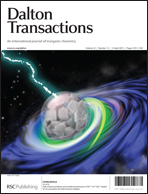3-Amino-N-aryl-benzenesulfonamides (1–3) were successfully synthesized by the reaction of m-phenylenediamine and various benzenesulfonyl chlorides. Then, a series of ruthenium complexes (4–6) were prepared from the reaction of [RuCl2(p-cymene)]2 and 1–3. Finally, SiO2-supported Ru(II) complexes (7–9) were prepared by an impregnation method. The synthesized compounds and materials were characterized by different methods such as NMR, FT-IR, TG/DTA, nitrogen adsorption–desorption (BET), SEM and EDX. Also, the solid state structures of 4–6 were determined by single-crystal X-ray diffraction. 4–9 were used as catalysts for the transfer hydrogenation of acetophenone. 4–9 showed good catalytic activity and so the effects of the different groups were also examined. For the transfer hydrogenation of acetophenone, 7–9 had similar activity to 4–6. However, the longer lifetime of 7–9 makes them more advantageous than the non-supported catalysts (4–6) in terms of catalytic cycle. Therefore, the effect of SiO2 was investigated as a catalyst and the results show that excess silicon(IV) oxide was a surprisingly active catalyst for the hydrogenation of acetophenone under these conditions.

You have access to this article
 Please wait while we load your content...
Something went wrong. Try again?
Please wait while we load your content...
Something went wrong. Try again?


 Please wait while we load your content...
Please wait while we load your content...